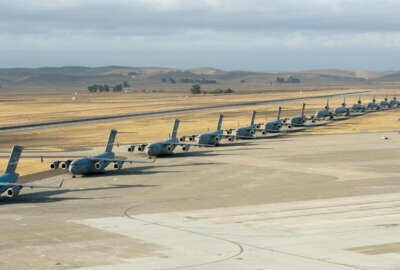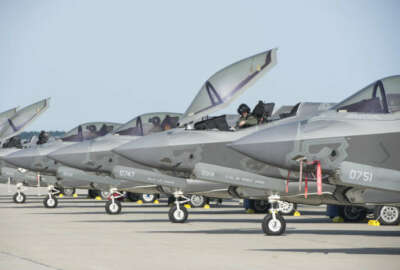Air Force faces first test from Congress in divesting from legacy systems
The Air Force wants to save $1.4 billion by getting rid of obsolete weapons.
When the Defense Department wants to start divesting in some weapons systems, it’s inevitable that Congress is going to start asking questions about why the military doesn’t need them anymore.
The Air Force faced its first round of questioning Tuesday on the 2022 budget, and members of the Senate Appropriations Defense Subcommittee were especially keen to hear how the retirement of certain planes will affect their constituents.
The Air Force is trying to save $1.4 billion by getting rid of some of its A-10s, F-15s, F-16s, KC-135s, KC-10s, C-130Hs, E-8s and RQ-4s.
Gen. C.Q. Brown, Air Force chief of staff, tried to alleviate senators’ fears that planes would leave their districts by assuring them that they would be replaced by upgraded units.
For example, subcommittee Chairman Sen. Jon Tester (D-Mont.) was concerned about the eight C-130Hs the Air Force wants to do away with.
“Part of the analysis we do with U.S. Transportation Command is we look at the overall C-130 fleet and where to add C-130Js,” Brown said. “C-130Js are the upgraded version of the cargo plane and are the only ones still in production. C-130Js are a bit more capable as far as range and as well as capacity than the C-130H models.”
Tester said he was concerned about Air National Guard squadrons that might be without C-130s, at least temporarily. Brown did not have specifics about whether any squadrons would lose flying missions.
Sen. Patty Murray (D-Wash.) was also worried about planes in her state.
“I am concerned that the proposed divestments of KC-135 will hurt the air refueling mission based in Washington state,” she said.
Air Force Acting Secretary John Roth said that the Air Force is deciding where it will put its upgraded KC-46 and is going through its strategic basing process.
He said Fairchild Air Force Base in Washington is a “terrific” candidate.
The military as a whole is divesting from $2.8 billion in legacy systems in the 2022 budget. The cuts get rid of old weapons that cost too much to maintain and gives DoD some wiggle room underneath a relatively flat budget to put more money in future technologies.
“The Defense budget funds the right mix of capabilities that we need most to defend this nation now and in the future,” Defense Secretary Lloyd Austin told the House Appropriations Defense Subcommittee last month. “It invests in hypersonic weapons, artificial intelligence, microelectronics, 5G technology, cyber capabilities, shipbuilding, climate change resilience and nuclear modernization to name a few. It gives us the flexibility to divest ourselves of systems and platforms that do not adequately meet our needs; including older ships and aircraft and intelligence platforms that demand more maintenance and upkeep and risk than we can afford.”
Congress still holds the power of the purse however, and parochial issues sometimes loom over the national interest.
Paul Arcangeli, staff director for the House Armed Services Committee, summed up the issues yesterday at an NDIA event.
“Just because retiring a system is logical, doesn’t mean it’s going to be accepted by Congress,” he said. “It kills my soul to say it, but the facts are interesting and often unimportant when you’re dealing with these kinds of things. We live in the world of politics; the members are looking at it in a different way. We try and explain it to the members, we try and tell them to do the system retirement, we try to show them the national security benefit, but in the end they have to support their district.”
Senate appropriators are likely to further scrutinize DoD’s budget cuts in the coming days as they continue to hear from the services.
Copyright © 2025 Federal News Network. All rights reserved. This website is not intended for users located within the European Economic Area.
Scott Maucione is a defense reporter for Federal News Network and reports on human capital, workforce and the Defense Department at-large.
Follow @smaucioneWFED






